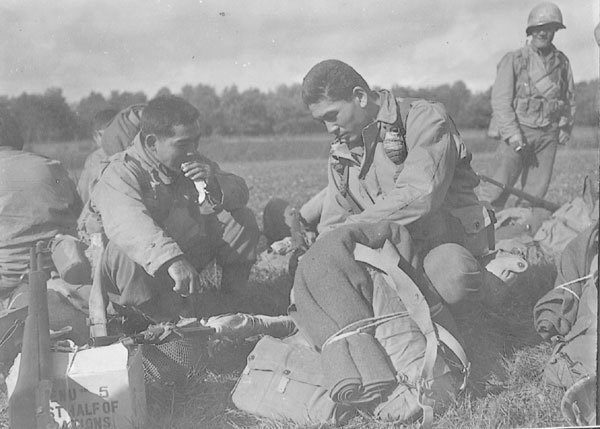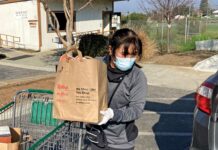Heroes are forged in the fires of hell. Lawson Sakai, an
81-year-old Gilroy resident, is a veteran of World War II. He was a
member of the 442nd Regimental Combat Team, one of American
history’s most courageous assemblies of servicemen.
Tuesday afternoon, I spent a few hours with Lawson as he
described how, 60 years ago, he fought alongside his brother
infantrymen against German soldiers in France’s Vosges
Mountains.
Heroes are forged in the fires of hell. Lawson Sakai, an 81-year-old Gilroy resident, is a veteran of World War II. He was a member of the 442nd Regimental Combat Team, one of American history’s most courageous assemblies of servicemen.
Tuesday afternoon, I spent a few hours with Lawson as he described how, 60 years ago, he fought alongside his brother infantrymen against German soldiers in France’s Vosges Mountains.
After Japan’s surprise attack on Pearl Harbor, the patriotic 18-year-old Lawson immediately journeyed with buddies to the Long Beach Naval Station to sign up for military duty. All his friends easily joined. But enlistment officers classified Lawson as “4-C.” Even though he’d been born in Los Angeles, they labeled him “an enemy alien.” See, Lawson was a “Nisei,” the son of parents born in Japan. Because of his heritage, the feds considered him a “threat” to national security.
“When I looked at myself in the mirror,” he told me in recollection, “I thought I looked like everyone else who was an American … Basically, they took away my Constitutional rights. It made me a person without a country.”
In early 1942, President Roosevelt signed the infamous Executive Order 9066. Lawson watched as friends and neighbors of Japanese ancestry were quickly rounded up and imprisoned – without due process of law – behind the barbed wires of American-built concentration camps. Although the government never interned Lawson and his family, Executive Order 9066 forced them to abandon their Monte Bello greenhouse business and resettle in Delta, Colo. There the flower growers wouldn’t “threaten” West Coast safety.
By March 1943, Uncle Sam needed more able-bodied men for war. Rules changed. Nisei could volunteer now. So Lawson signed up. Soon, he found himself at Camp Shelby, Miss., as part of E Company in the all Japanese-American 442nd Combat Team. He and fellow Nisei underwent a year of training before they shipped off in May 1944 to Naples, Italy.
Their first taste of World War II was a costly disaster. As they marched down an Italian road, Lawson remembers, they witnessed a trail of dust mysteriously rise before them – from bullets. In horror, he watched as German ammunition sliced through men’s torsos and limbs. Many of Lawson’s companions crumpled where they stood. Survivors dove for cover.
For German soldiers, they were ducks in a shooting gallery.
“We didn’t know what the hell was going on,” Lawson told me. “We learned a bloody lesson. We should have been told what to expect, what kind of weapons the enemy would use.”
The 442nd made its way north to France. In early October, they fought a brutal two-week conflict with Germans to liberate Bruyeres and Biffontaine in the Vosges Mountains. Misty rain fell. Soldiers shivered in foxholes flooded with freezing water. Screaming artillery shells burst the canopy forest all around them. Spurred by their “Go for broke!” battle cry, the valorous Nisei finally liberated the two French towns on Oct. 23.
Their journey through hell, however, was far from over. Arrogantly hoping to beat General Patton to Germany, Major General John Dahlquist had earlier ordered the 141st Texas Regiment to advance four miles beyond friendly forces. A colossally stupid mistake. About 6,000 fresh Germans soldiers surrounded the more than 200 Texans, trapping them on a ridge. (History now calls them “the Lost Battalion.”)
Recognizing the aggressive Nisei soldiers were his best hope, Dahlquist ordered the 442nd to rescue the 141st Regiment he’d put in harm’s way.
On Oct. 25, with only two day’s rest, the exhausted Nisei began an unmerciful six-day assault.
They endured a number of “banzai” charges – chasing up hills against the incessant rain of German bullets. Never-ending heavy artillery barrages thundered down upon them. Hell-fire explosions screamed in Lawson’s ears as trees burst and flying shrapnel plummeted. Many comrades perished around him.
Lawson remembers a close friend getting seriously hit. Blood poured from a large hole torn into his back. Lawson patched his friend up as best he could, then rejoined the ferocious fight.
“You’re going on adrenaline all the time,” he recalls. “You can’t think about it. You black it out.”
Two days into the battle, a grenade blast struck Lawson. Medics quickly patched him up for more fighting. But the next day Lawson got hit a second time. A tree burst above him. Plunging shrapnel pieces seared his back. An unbelievable agony exploded through his body.
“It’s so hot, jagged,” he vividly recollects the pain. “It knocks the wind out of your body before you go numb.”
Medics injected Lawson with morphine. He later woke in a train heading to the U.S. Army’s hospital in Dijon, France.
Two more days of fighting continued before Lawson’s fellow Nisei reached the trapped Texas regiment. Still they received no rest. To secure the forest, the driven Dalhquist ordered them to continue fighting another nine days. Sniper fire, mines, artillery and shrapnel blasts wounded and killed many more Nisei.
After 34 days of almost non-stop combat, the 442nd suffered the deaths of 216 men and injuries to 856. The dead and wounded outnumbered the survivors.
Last month, Lawson returned to the Vosges Mountain for the 60th anniversary of the 442nd’s rescue of the Lost Battalion. The forever young faces of fallen comrades still haunt his memories.
In Lawson’s well-manicured yard on Tuesday afternoon, we stood by a peaceful Koi pond. Misty rain fell. I asked him for his definition of “courage.” I figured, if anyone knew what valor was, this battle veteran surely must.
He thought a somber moment. “I see so many guys that gave up their lives because …” He paused. “It’s doing what you’re suppose to do,” he finally said.
On Veterans’ Day this week, we recognized South Valley’s courageous men and women who have served in the military. They are our friends and neighbors. They are American heroes.
True heroes, people like Gilroy’s Lawson Sakai, hope one day the world might finally achieve lasting peace among all nations. One day, they pray, no more heroes need pass through the infernos of the hell called war.













